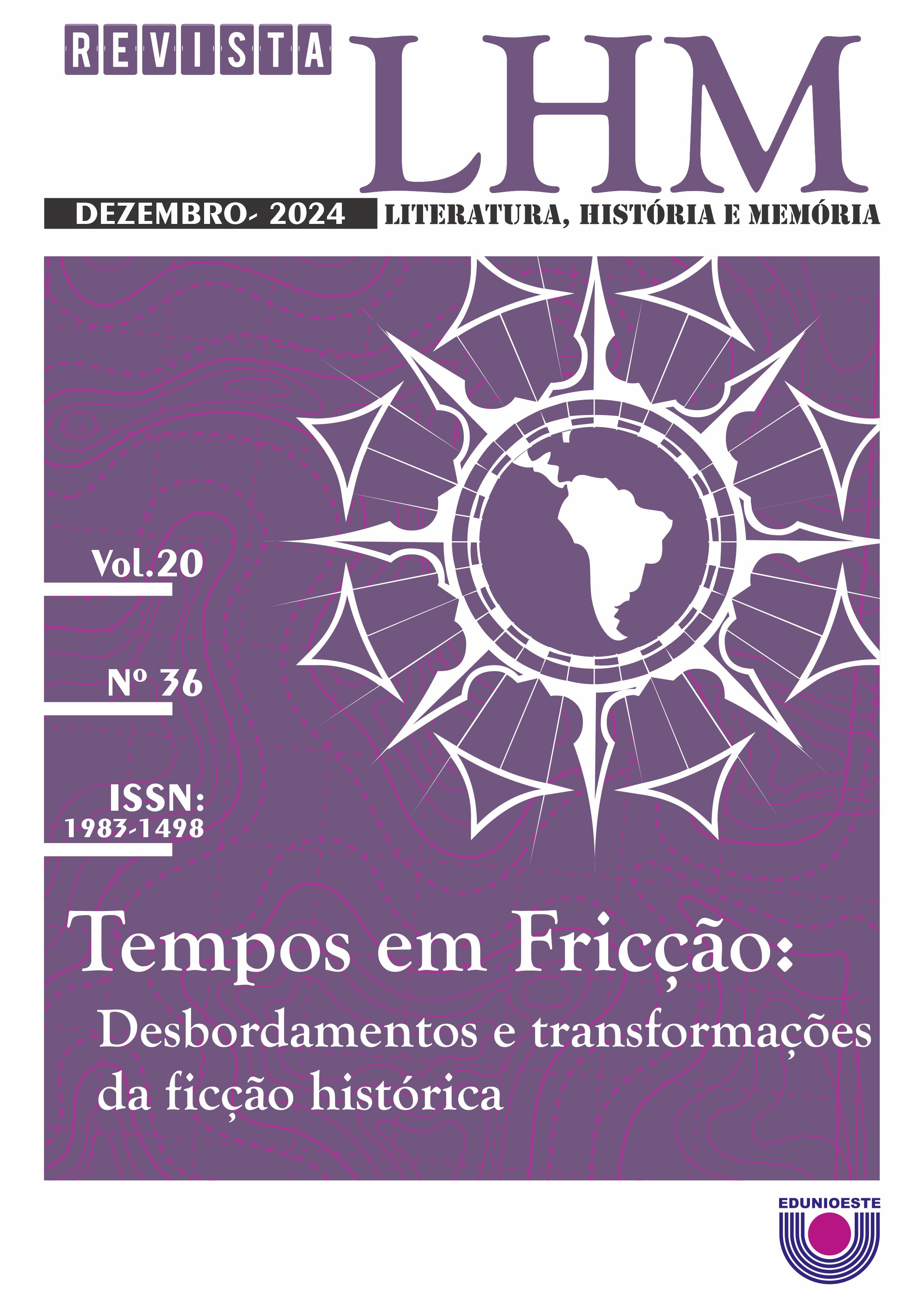O Jogo estético em Teresa Cárdenas
reflexões sobre o romance cubano Cartas para minha mãe
DOI:
https://doi.org/10.48075/rlhm.v20i36.33579Resumo
O presente artigo discute a questão da estética de Teresa Cárdenas, em seu romance epistolar Cartas para a minha mãe (2010). À revelia do pensamento colonial, o romance é narrado sob o olhar de uma criança negra que escreve cartas para a sua mãe morta. Nele é discutido questões sobre o luto, o abandono familiar, bem como entonação feminina a partir da voz da personagem principal para produzir vida, mesmo com uma infância cooptada pela estrutura colonial cubana. Pensando nisso, objetiva-se analisar o modo como a autora utiliza da voz negra e infantil, em um jogo estético, para denunciar o local da mulher negra, bem como produzir vida a partir de vestígios de uma infância. Assim, buscamos apoio no filósofo francês Jacques Rancière (2005) que entende a estética como subterfugio de experimento do sensível de forma autônoma. Desta maneira, a estética é uma forma de emancipação da arte, pois sua intenção é desestabilizar as hierarquias políticas e sociais. Aqui, as artes não têm obrigações, nem regras preestabelecidas, elas seguem sua autenticidade. De forma similar, na literatura de Cárdenas (2010), o jogo estético se dá pela maneira como a força e resistência negra é criada para enunciar vozes subalternizadas de mulheres cubanas. Diante disso, no primeiro momento este estudo discute a questão da estética para as artes e a construção da estética de Cárdenas. Por conseguinte, discutimos o que diz a criança do romance aqui em análise e sua forma de ver e pensar o mundo na perspectiva negra infantil.
Downloads
Publicado
Como Citar
Edição
Seção
Licença

Este trabalho está licenciado sob uma licença Creative Commons Attribution-NonCommercial-ShareAlike 4.0 International License.
Aviso de Direito Autoral Creative Commons
Política para Periódicos de Acesso Livre
Autores que publicam nesta revista concordam com os seguintes termos:
1. Autores mantém os direitos autorais e concedem à revista o direito de primeira publicação, com o trabalho simultaneamente licenciado sob a Licença Creative Commons Attribution que permite o compartilhamento do trabalho com reconhecimento da autoria e publicação inicial nesta revista.2. Autores têm autorização para assumir contratos adicionais separadamente, para distribuição não-exclusiva da versão do trabalho publicada nesta revista (ex.: publicar em repositório institucional ou como capítulo de livro), com reconhecimento de autoria e publicação inicial nesta revista.
3. Autores têm permissão e são estimulados a publicar e distribuir seu trabalho online (ex.: em repositórios institucionais ou na sua página pessoal) a qualquer ponto antes ou durante o processo editorial, já que isso pode gerar alterações produtivas, bem como aumentar o impacto e a citação do trabalho publicado (Veja O Efeito do Acesso Livre).
Licença Creative Commons
Esta obra está licenciada com uma Licença Creative Commons Atribuição-NãoComercial-CompartilhaIgual 4.0 Internacional, o que permite compartilhar, copiar, distribuir, exibir, reproduzir, a totalidade ou partes desde que não tenha objetivo comercial e sejam citados os autores e a fonte.


